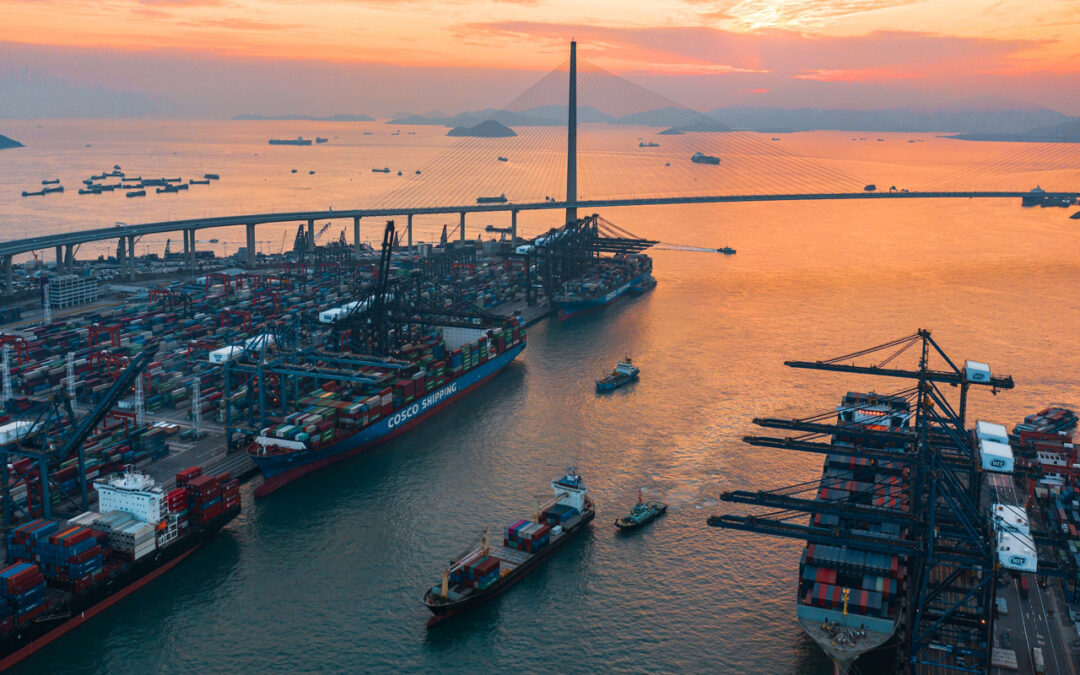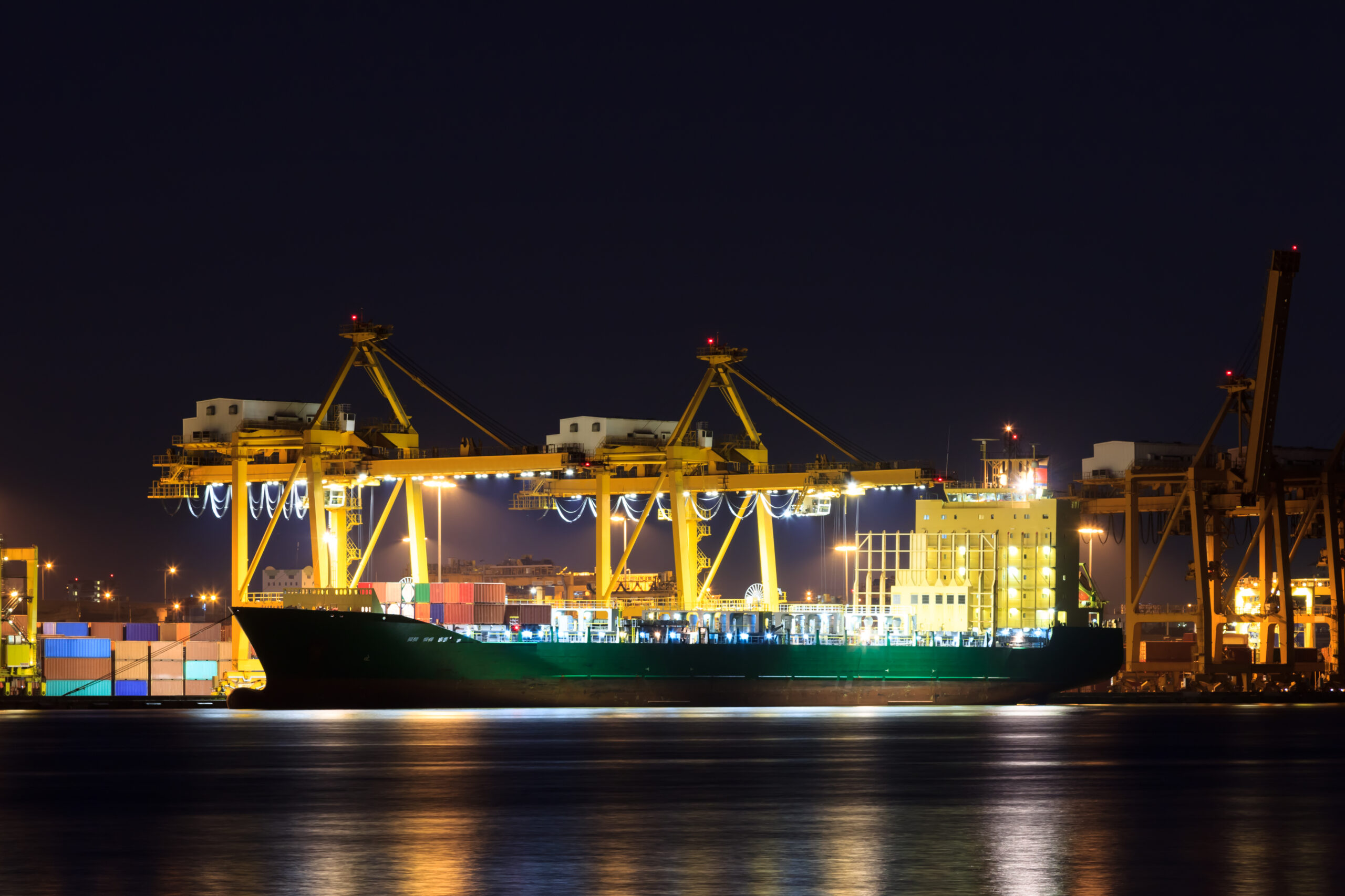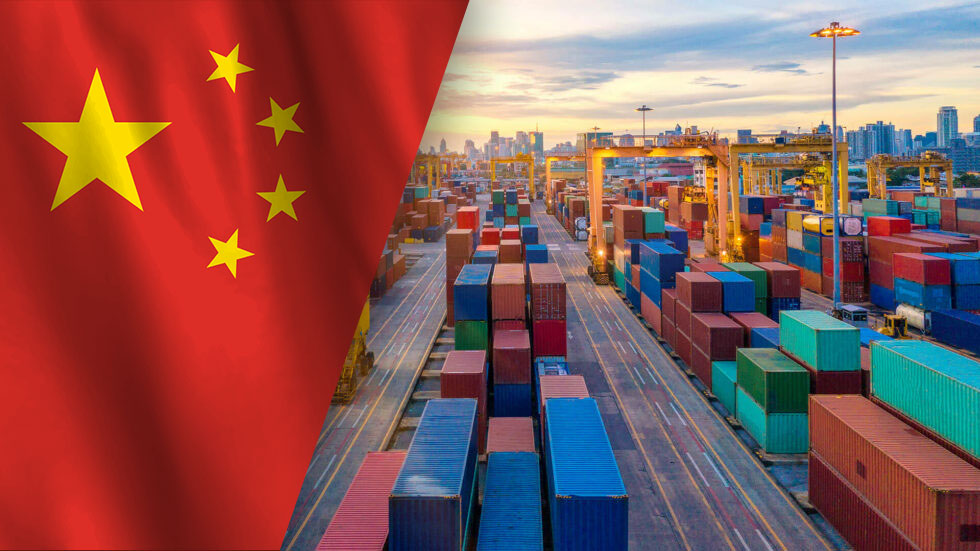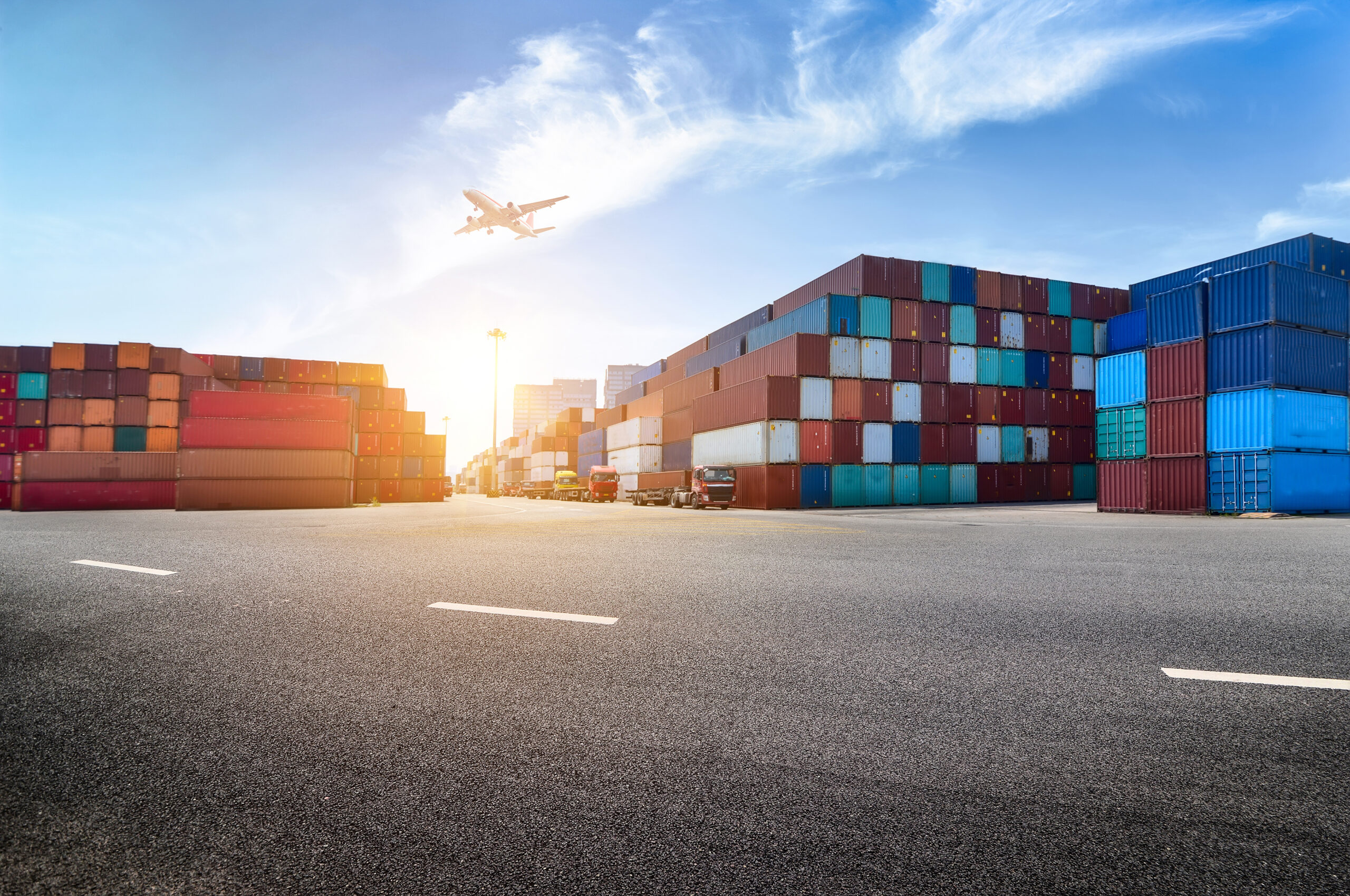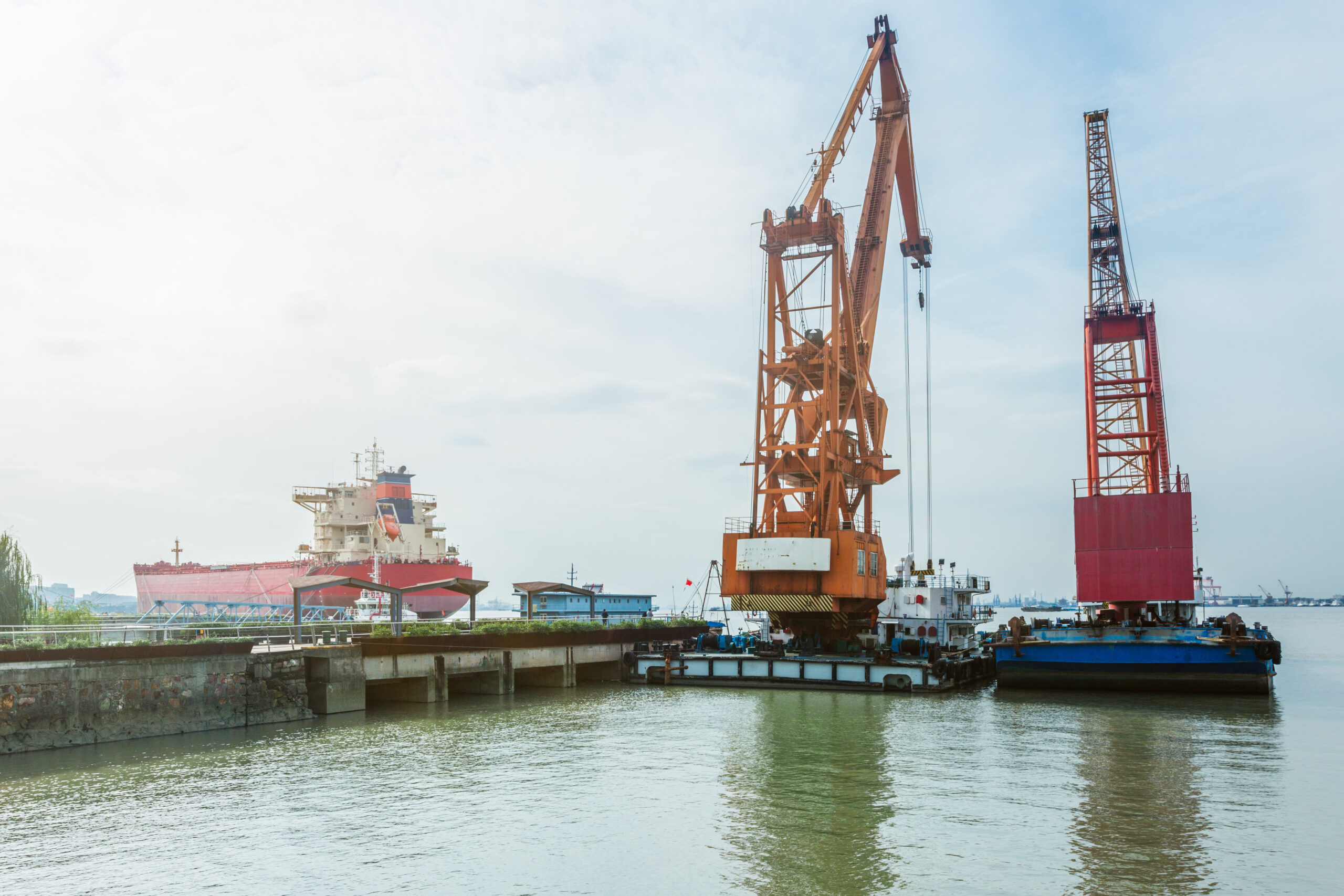This week:
- Shippers continue to divert Asian imports to East and Gulf Coasts as ILWU negotiations continue
- Asian import volumes expected to decline further through the fourth quarter
- US trucking industry outperforms expectations
- 12 marine highway projects receive $39 million in federal grants
- Ocean freight spot rates could drop below pre-pandemic levels by end of year
US East and Gulf Coast Import Volumes Rise as ILWU Negotiations Slow
Contract negotiations between the International Longshore & Warehouse Union (ILWU) and Pacific Maritime Association (PMA) on the West Coast hit additional hurdles in the past month. The protracted West Coast contract negotiations are forcing retailers and shippers to divert more Asian import volumes towards the East and Gulf Coasts to avoid potential supply chain disruptions.
While the diversions occur during labor contract negotiations most years, greater import volumes are avoiding West Coast ports this year.
From the start of the year through to September, East Coast Asian import volumes increased 11.8% year-over-year, while Gulf Coast ports saw a more drastic increase of 29.2% in the same period, and West Coast volumes dipped by 1.7%.
In September, Asian imports dropped 10.4% year-over-year in the Northwest Seaport Alliance of Seattle and Tacoma. For comparison, Asian imports increased by 14.3% in New York-New Jersey, 34.2% in Houston, and 45% in Charleston in the same period.
The push away from the West Coast comes down to threats of job action along the West Coast regarding current contract negotiations, California’s new AB5 legislation affecting drayage capacity, and restrictions on aging trucks.
Sign up to Receive JMR’s Supply Chain News Roundup, Delivered Directly to Your Inbox Weekly
US Asian Import Declines Inbound as September Volumes Plummet
While shippers divert Asian imports away from the West Coast, import volumes from Asia as a whole declined by 10.4% in September from August, the lowest import volume per month since December 2021. August import volumes totaled 1.68 million TEU, dropping to 1.51 million TEU in September, 2.8% lower than September 2021.
Because retailers and shippers front-loaded orders at the start of the year, this sharp decline may indicate that Asian import volumes for the rest of the year will either remain low or continue to drop further.
According to Global Port Tracker (GPT), a publication of the National Retail Federation and Hackett Associates, October Asian import volumes will drop 9.4%, November 4.9%, and December 6.1% year-over-year. Additionally, GPT expects imports for all of 2022 to be only 0.7% higher than in 2021.
US Truck Capacity Rises Alongside Trucking Demand
The for-hire trucking ton-mile index (TTMI), released by Michigan State University and the University of Tennessee, measuring the output of trucking services, rose by 1.4% in August from July after seasonal adjustment, after July fell by 1.4% from June.
The rise in trucking activity continues to defy predictions of a reduction in trucking demand for the year’s second half, with August’s TTMI measurement increasing 3% year-over-year, indicating that capacity has caught up with demand after struggling to keep up in the first half of the year.
Although retailers and industry leaders predict a US recession in the fourth quarter of 2022, the trucking industry is not showing signs of a reduction in demand as activity returns to the same levels seen in June.
Falling dry-van spot rates are another sign that capacity has caught up with demand. National dry-van spot rates in September 2021 averaged $3.46/mile, falling to $2.94 in August and $2.86 last month. However, national spot rates rose by $0.02/mile by October 10, indicating a possible rebound in demand for the fourth quarter.
Ports to Receive $39 Million in Grants from US Maritime Administration
The US Maritime Administration (MARAD), part of the Department of Transportation (DOT), is giving $39 million in federal port grants to 12 marine highway projects, the majority of which focus on improving container-on-barge services as a means of increasing cargo flow and reducing emissions.
Part of the grant will fund services along the Californian coast and container and trailer-on-barge services in the Port of New York-New Jersey. The Port of Richmond will receive $3,712,000 to improve terminal barge services, and $1,050,000 will go to the Baton Rouge-New Orleans barge service.
Ports awarded grants from MARAD must also comply with and implement requirements under the “Buy America, Build America” law. The law stipulates that ports must use grant funds to purchase US-manufactured equipment and materials with low emission ratings.
HSBC Predicts Ocean Freight Spot Rates to Drop Below Pre-Pandemic Rates by End of 2022
Weak vessel demand, excess vessel capacity, and easing port congestion may drive trans-Pacific and Asia-Europe ocean freight spot rates down to 2019’s pre-pandemic rates by the end of 2022, according to research from HSBC bank.
From July until October, HSBC research analysts noted that the Shanghai Containerized Freight Index (SCFI) fell 51%, or 7.5% each week, significantly below contract rates. Following this trend, HSBC expects this sector’s profitability to completely bottom out by mid-2023.
The trans-Pacific and Asia-Europe spot rates are dropping as new container and shipping equipment enters the market from the current order book of 7 million TEU, combined with additional capacity freed up as ports clear their backlogs. In 2023, ocean container demand will rise by approximately 1.9%, while ocean capacity will outpace demand by increasing by 11.3%, according to figures from Drewry.
HSBC predicts carrier profits will remain “resilient” for the third quarter but will begin declining at the beginning of the fourth quarter and through 2023.
Featured Photo Credit
Photo by Manson Yim on Unsplash
